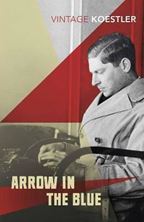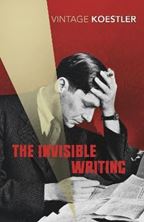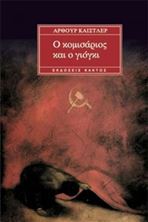Arthur Koestler
Arrow in the Blue
The first volume of the remarkable autobiography of Arthur Koestler, author of Darkness at Noon.
In 1931, Arthur Koestler joined the Communist Party, an event he felt to be second only in importance to his birth in shaping his destiny. Before that point, he lived a tumultuous and varied existence. He was a member of the duelling fraternity at the University of Vienna; a collective farm worker in Galilee; a tramp and street vendor in Haifa; the editor of a weekly paper in Cairo; the foreign correspondent of the biggest continental newspaper chain in Paris and the Middle East; a science editor in Berlin; and a member of the North Pole expedition of the Graf Zeppelin.
Written with enormous zest, joie de vivre and frankness, Arrow in the Blue is a fascinating self-portrait of a remarkable young man at the heart of the events that shaped the twentieth century.
The second volume of Arthur Koestler's autobiography is The Invisible Writing.
Croisade sans croix
Réflexions sur la peine capitale
The Anchor review #64
The Invisible Writing
The second volume of the remarkable autobiography of Arthur Koestler, author of Darkness at Noon.
Taken together, Arthur Koestler's volumes of autobiography constitute an unrivalled study of a twentieth-century life. The Invisible Writing picks up where the first volume, Arrow in the Blue, ended, with Koestler joining the Communist Party. This second volume goes on to detail some of the most important, gruelling and electrifying experiences in his life.
This book tells of Koestler's travels through Russia and remote parts of Soviet Central Asia and of his life as an exile. It tells of how he survived in Franco's prisons under sentence of death and in concentration camps in Occupied France and ends with his escape in 1940 to England, where he found stability and a new home.
Ισπανική διαθήκη
Ισπανία 1937.
Ο εμφύλιος μαίνεται, και ο συγγραφέας, ανταποκριτής της λονδρέζικης εφημερίδας «Νιους Κρόνικλ», συλλαμβάνεται από τα στρατεύματα του Φράνκο μετά την πτώση της Μάλαγα και καταδικάζεται σε θάνατο.
Επί τέσσερις μήνες ζει με την εφιαλτική αναμονή της εκτέλεσης. Στο μεταξύ γίνεται μάρτυρας των εκτελέσεων άλλων συγκρατουμένων του.
Ο ίδιος σημειώνει: «Αυτό το βιβλίο, λοιπόν, αρχίζει σαν ρεπορτάζ, τελειώνει όμως εντελώς διαφορετικά. Θα μπορούσε κανείς να το ονομάσει "Παραλλαγές στο θέμα του θανάτου" ή, ακόμα καλύτερα, "στο θέμα του φόβου του θανάτου"».










